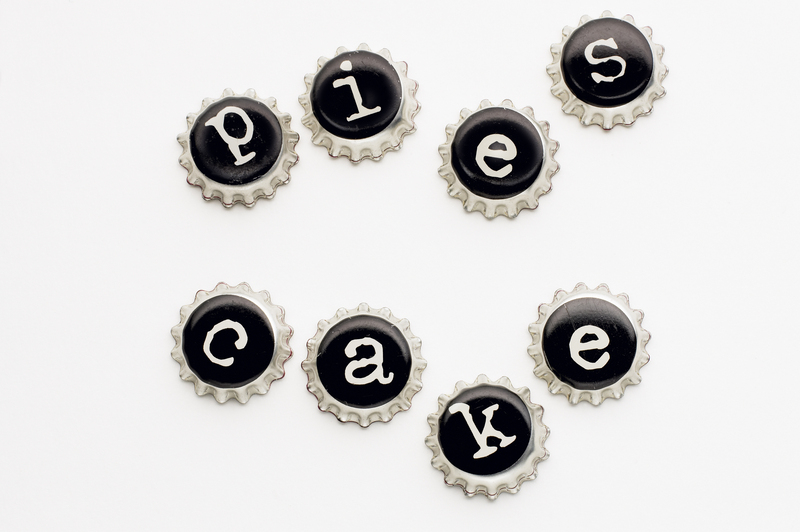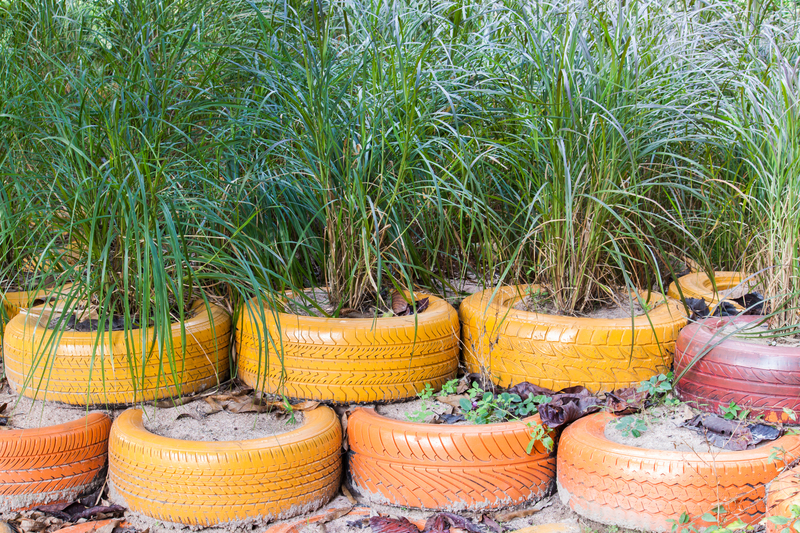Understanding Hazardous Waste: What's on the List?
Hazardous waste is a term that frequently appears in environmental news, business compliance manuals, and household safety guides. But what exactly qualifies as hazardous waste? How is it identified, classified, and managed? In this in-depth article, we'll break down what hazardous waste is, what's on the hazardous waste list, and how organizations and individuals can address it safely and responsibly.
What Is Hazardous Waste?
Hazardous waste refers to any discarded material - solid, liquid, or gas - that can be potentially harmful to human health or the environment. These wastes commonly originate from industrial, household, medical, or commercial activities. They may be toxic, corrosive, ignitable, or reactive, making their disposal especially critical.
- Toxicity: Harmful or fatal when ingested or absorbed, or released into the environment.
- Corrosiveness: Can erode materials or living tissue, usually acids or bases with extreme pH.
- Ignitability: Can catch fire easily under certain conditions.
- Reactivity: May explode or produce dangerous gases, vapors, or fumes.

Who Regulates Hazardous Waste?
In the United States, the Environmental Protection Agency (EPA) defines and regulates hazardous waste under the Resource Conservation and Recovery Act (RCRA). Globally, different countries and regions have their own regulatory frameworks, such as the Basel Convention and European Union Waste Directive. All have a common goal: to protect people and the planet from improper handling and disposal of dangerous wastes.
The Four Characteristics of Hazardous Waste
Not all waste is created equal. To be officially classified as hazardous, waste must meet specific EPA criteria. Here are the four primary characteristics used to define hazardous wastes:
1. Ignitability
Wastes that can catch fire under certain conditions are considered ignitable. Examples include:
- Solvents such as acetone or paint thinners
- Oils, fuels, and gasoline
- Alcohol-based disinfectants
2. Corrosivity
Corrosive wastes are typically acids or bases with very high or low pH values. Common examples:
- Battery acid
- Rust removers
- Ammonia solutions
3. Reactivity
Reactive wastes are unstable under "normal" conditions, can cause explosions, or release toxic gases. Examples:
- Sodium metal
- Peroxides
- Old ammunition
4. Toxicity
Toxic wastes can pose a fatal risk to human health or the environment. Examples include:
- Pesticides
- Lead-based paint chips
- Arsenic compounds
Understanding the EPA's Hazardous Waste Lists
In addition to hazardous characteristics, certain wastes are considered hazardous by definition and are placed on specific regulatory hazardous waste lists by the EPA. These are the so-called listed wastes. If a waste appears on one of these lists, it is automatically regulated as hazardous, regardless of its properties.
The Four EPA Hazardous Waste Lists
-
F-List ("Non-specific Source Wastes"):
- Wastes from common manufacturing processes such as degreasing solvents, spent cleaning fluids, and sludges.
-
K-List ("Source-Specific Wastes"):
- Wastes specific to particular industries, such as petroleum refining or pesticide manufacturing.
-
P-List ("Acutely Hazardous Wastes"):
- Highly dangerous commercial chemical products, many of which are unused speciality chemicals.
-
U-List ("Toxic Wastes"):
- Various toxic chemicals and pharmaceuticals, including solvents and some expired prescription drugs.
Examples from Each Hazardous Waste List
- F-List Example: Used solvent from a degreasing operation (e.g., trichloroethylene).
- K-List Example: Wastewater from wood preserving processes.
- P-List Example: Unused cyanide compounds.
- U-List Example: Expired acetone-based lab chemicals.
Why Are These Lists Important?
Being on the list means regulatory requirements kick in: generators, transporters, and treatment facilities must track, manage, and dispose of these wastes under strict protocols. Identifying what's on the hazardous waste list is vital for environmental compliance and public well-being.
Common Examples of Hazardous Waste
Hazardous waste can be found in many forms and places, not just in large-scale factories. Here's a look at typical hazardous waste examples across various categories:
- Household: Paints, cleaning chemicals, fluorescent bulbs, batteries, e-waste, pesticides
- Industrial: Solvent sludges, acids, byproducts from chemical manufacturing
- Medical: Used needles, expired medications, X-ray film
- Laboratory: Mercury thermometers, reagent chemicals
- Agricultural: Pesticides, herbicides, animal pharmaceuticals
Hazardous Waste in the Home
Many people are surprised to learn how many common household products end up on hazardous waste lists. For example:
- Old electronics (e-waste): Contain lead, mercury, or flame retardants.
- Paint thinners and strippers: Often contain volatile organic compounds (VOCs).
- Batteries: Many have heavy metals like cadmium, nickel, or lithium.
- Pesticides and herbicides: Can persist in the environment and pose risks to people and wildlife.
How Is Hazardous Waste Identified and Classified?
Recognizing and labeling hazardous waste materials isn't just about consulting a list. There's a systematic process, especially for businesses and institutions. The process involves:
- Determining if the waste is excluded from hazardous waste regulations.
- Assessing if the waste is listed in the EPA's hazardous waste lists (F, K, P, U).
- Testing for hazardous characteristics (ignitability, corrosivity, reactivity, toxicity).
- Classifying waste by its generator status (how much is produced monthly).
Knowing how to comply with hazardous waste management legislation can prevent harmful environmental impacts and costly fines.
Waste Codes Explained
Each hazardous waste on the EPA list has a unique identifier called a waste code (e.g., D001 for ignitable waste, F003 for spent non-halogenated solvents). These codes are essential for labeling, tracking, and reporting as part of a comprehensive hazardous waste management system.
The Dangers of Improper Hazardous Waste Disposal
Improper hazardous waste disposal can have severe repercussions:
- Soil and Water Contamination: Toxins leach into groundwater, rivers, and oceans, harming people and wildlife.
- Air Pollution: Some wastes release harmful vapors or gases when incinerated or left outdoors.
- Health Hazards: Exposure increases the risk of respiratory illnesses, neurological damage, cancer, and birth defects.
- Legal and Financial Consequences: Non-compliance can result in hefty fines, lawsuits, and reputational damage.
Real-World Examples of Hazardous Waste Accidents
- Love Canal Disaster (New York): Improper disposal of chemical waste led to a public health crisis and the relocation of residents.
- Bhopal Disaster (India): Mishandling chemicals caused fatal gas leaks, considered one of the world's worst industrial disasters.
How to Manage Hazardous Waste: Key Steps
Whether you're a business, laboratory, healthcare facility, or household, it's vital to manage hazardous waste streams responsibly.
- Identify and segregate hazardous waste: Correctly label and separate from regular trash.
- Store safely: Use leak-proof, corrosion-resistant containers.
- Document and track: Keep records of hazardous waste production, storage, and shipping.
- Use authorized transporters: Always utilize licensed hazardous waste handlers.
- Treat and recycle where possible: Technologies exist for recovering solvents, metals, and energy.
- Arrange for proper disposal: Use EPA-permitted facilities specializing in hazardous waste treatment, storage, and disposal (TSDFs).
Disposal Options for Households
- Participate in local hazardous waste collection events.
- Take items to authorized recycling or collection centers (e.g., for batteries, electronics).
- Never pour hazardous wastes down the drain, on the ground, or with regular trash.
Key Regulations and Compliance Tips
Complying with local, state, and federal regulations is essential. Here's a summary of the most relevant guidelines:
- Resource Conservation and Recovery Act (RCRA): Federal regulation for generation, transportation, treatment, storage, and disposal of hazardous wastes.
- Hazardous Waste Manifest System: Mandates tracking of hazardous waste from the point of generation to final disposal ("cradle to grave").
- Occupational Safety and Health Administration (OSHA): Ensures safe handling by employees.
- State and Local Rules: States may have stricter hazardous waste management and reporting requirements.
Compliance Tips
- Regularly audit your hazardous waste streams and update inventories.
- Train employees or household members on safe handling and emergency procedures.
- Work with professional hazardous waste consultants if needed.

Emerging Issues: E-Waste and Pharmaceuticals
With technological advancements, new types of hazardous waste emerge. E-waste (discarded electronics) and pharmaceutical waste present unique challenges:
- E-Waste: Contains heavy metals (lead, mercury) and flame retardants, requiring special recycling.
- Pharmaceutical Waste: Unused medications and chemicals can contaminate water supplies if flushed.
Proper collection and recycling or incineration methods are essential for these hazardous waste categories.
Conclusion: The Importance of Knowing What's on the Hazardous Waste List
Understanding what's on the hazardous waste list empowers individuals, businesses, and organizations to act responsibly. Identifying, classifying, and managing hazardous waste helps protect public health, conserve the environment, and avoid legal penalties. Always consult authoritative resources and stay updated on evolving regulations for hazardous waste handling.
By adhering to best practices and staying informed about current hazardous waste lists, everyone can play a part in creating a safer, cleaner future. For more information, consult your local environmental protection agency or professional hazardous waste disposal services.